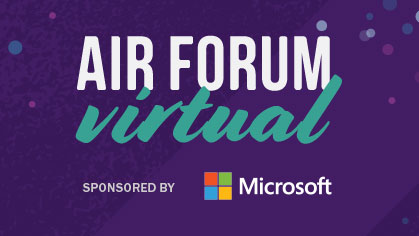At the Association for Institutional Research (AIR) Virtual Forum 2020, Allison BrckaLorenz, Thomas Nelson Laird, & I presented a live-simulated session about person-centered approaches to inclusive data analysis. A person-centered approach focuses on identifying different groups of individuals that share similar experiences and outcomes in higher education. This approach is designed to complement a traditional variable-centered approach that focuses on the association between variables. We shared three examples, using data from NSSE and FSSE, to highlight person-centered approaches to inclusive data analysis.
Our first example uses NSSE data to assess LGBQ+ student support. In a traditional approach, one could simply analyze an outcome like perceived gains – how much students attribute their intellectual and personal development to their college experience – of all LGBQ+ students compared to non-LGBQ+ students. To use a person-centered approach, we began by disaggregating Lesbian, Gay, Bisexual, Pansexual, Queer, Questioning, and Asexual students as well as lowest, modest, and highest perceived gains. By doing so, we revealed disparities as well as some positive outcomes for LGBQ+ students. Queer students are underrepresented in the highest gains category, but there is still a substantial amount who reported high gains or a high amount of support. The person-centered approach revealed many thought-provoking questions - what other characteristics contribute to LGBQ+ students who experience high perceived gains? What is it about their experiences that put them here?
In the second example, we examined FSSE data to understand better how faculty spend their time. In this example, a cluster analysis produced five distinct groups of faculty – classic, teaching-heavy, research-heavy, service-heavy, and moderate-load. Our person-centered approach identified distinct groups of faculty members that share similar experiences. These findings provide novel insight to tell a complete story of how faculty spend their time.
The final example relied on NSSE data from an item-set focused on socioeconomic status; we operationalized socioeconomic status using parental education, home possessions, and participation in cultural activities while growing up. Examining first-generation status, which we defined as neither parent having obtained a bachelor's degree, by socioeconomic status revealed substantial differences in seniors' participation in research with faculty members. Among non-first-generation students, high SES students were nearly three times more likely to participate in research compared to their low-SES peers. Thus, our approach using a more holistic measure of socioeconomic status provided novel insight about students' participation in the high-impact practice. Our analysis showed that first-generation status, should not be treated as monolithic groups or assumed to have equal experiences in higher education.
In conclusion, we would like to reiterate that a person-centered approach is just another tool to use for inclusive and data-driven storytelling. As a complement to traditional methods, a person-centered approach is valuable because it avoids treating students as a monolith – as if everyone from a particular group behaves the same way. Instead, the person-centered lens allows us to tell a more nuanced story about our students. View the PowerPoint and transcript of our simulated session.
Full citation:
BrckaLorenz, A., Kirnbauer, T., Nelson Laird, T. (2020). Person-centered Approaches to Inclusive Data Analysis. Speaker Session presented at the Association for Institutional Research (AIR) Virtual Forum.


